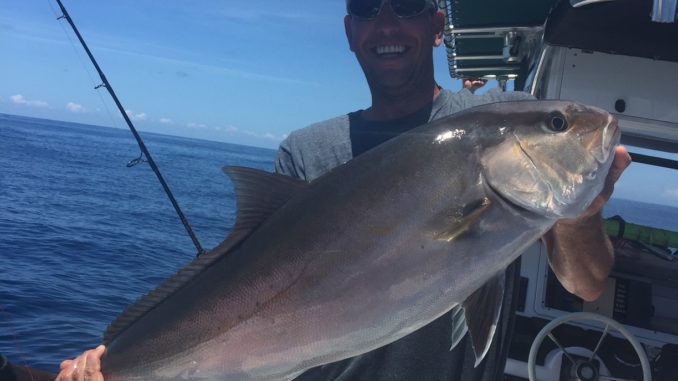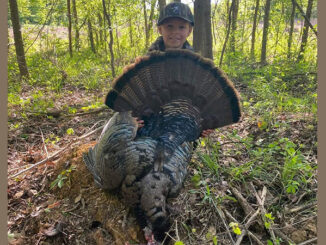
Amberjack invade Grand Strand reefs
As the end of the year approaches and seasonal closures arrive offshore, fishy options shift from species to species and place to place. Fortunately, there are plenty of choices in offshore waters to both bend a rod and hitch a ride back to the hill. For reel-screaming junkies who prefer a bluewater setting near a named reef, December is the last legal month to battle an oversized amberjack along the South Carolina coast.
The season on greater amberjack closes Jan. 1 for two months in the South Atlantic Fisheries Management region. That only makes December a better time for Tom Cushman of Captain Cush’s Calmwater Charters out of Myrtle Beach to target reef donkeys off the Grand Strand’s beaches.
“December is a real good time to target amberjack,” said Cushman (843-997-5850). “When the water cools off, the big ones over 50 pounds are around.”
Amberjack are structure-oriented fishes that prefer artificial reefs, shipwrecks and even high-relief ledges in offshore waters. Anglers departing from any Grand Strand port have plenty of options this month, several within a reasonable ride from shore.
“Wrecks and livebottom from 45 feet of water out to 110 feet will have amberjack on them in December,” he said, naming the General Sherman, Betsy Ross, Greenville, Vermillion, BP-25 and Bill Perry reefs.
Voracious feeders, amberjack will eat anything from squid and shrimp to chunks of fish and live bait. Few anglers who catch amberjack for the first time were targeting them but get hooked up when fishing bait around these structures.
Cushman gears up with 80-pound line to make sure when he hooks a bruiser amberjack, the fish makes it all the way to the boat. He drifts live baits across the reefs and jigs vertically. Typically, amberjack are suspended just off the reef and show up well on depth sounders.
“We usually mark them first and drop a heavy jig to the bottom and rip it to the surface,” he said. “But if that doesn’t work, we use a Carolina rig with live bait or a 1- to 3-ounce jig with a live bait and drop it to the depth of the fish and drift through again. When they are there, they will usually eat.”
Typically, many jacks are not considered the best table fare, but amberjacks are just the opposite. For best results, remove the last 6 inches of meat from the tail forward because of worms, and then remove the red meat located along the lateral line.



Be the first to comment